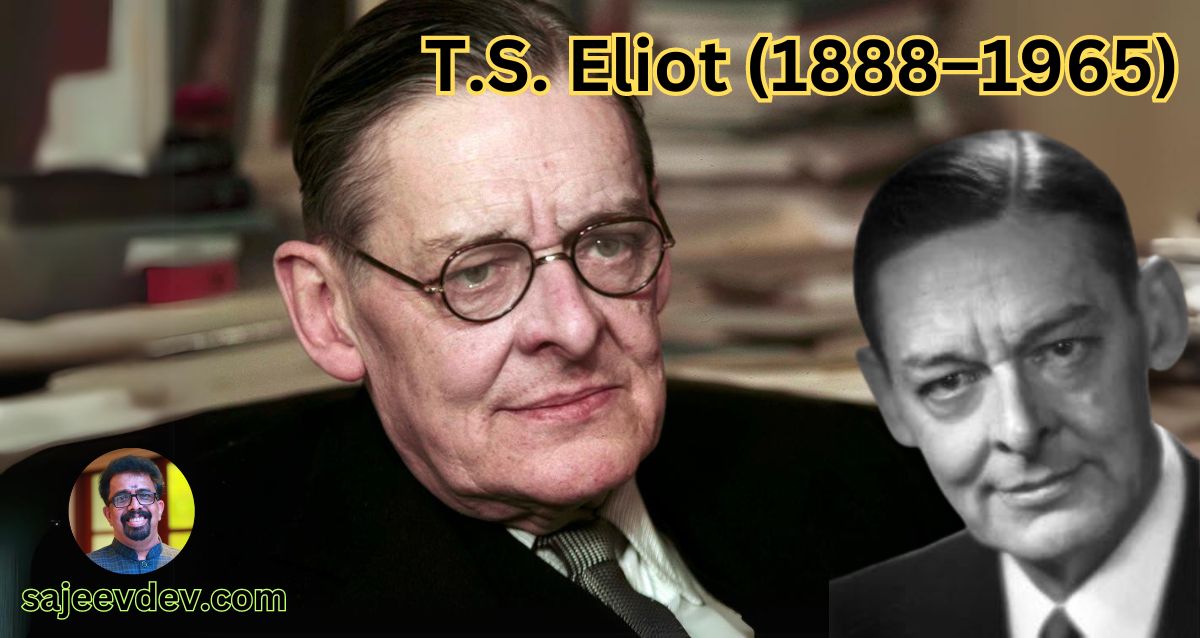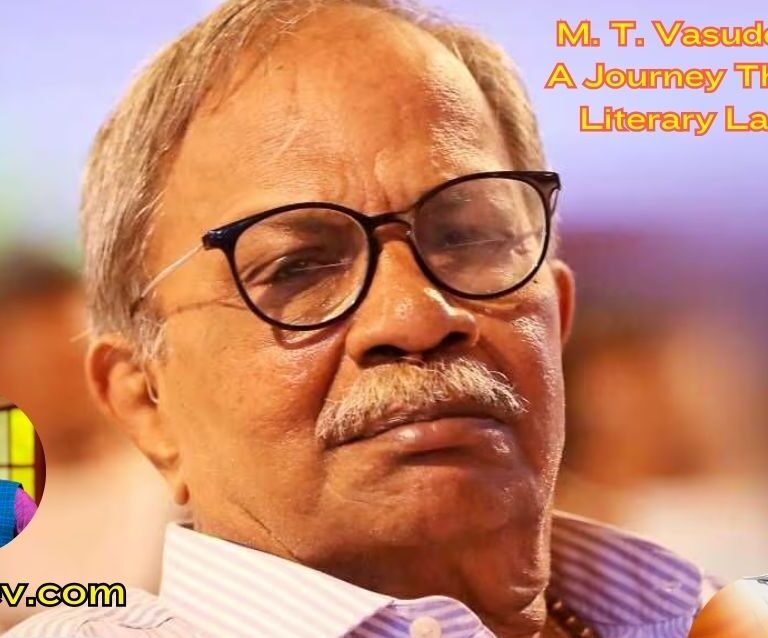T.S. Eliot and Modernist Poetry
T.S. Eliot, born on September 26, 1888, in St. Louis, Missouri, emerged as one of the most influential poets of the modernist movement, which fundamentally altered the course of literary history in the early 20th century. His work, marked by its innovative style and profound thematic exploration, not only reflected the complexities of contemporary life but also redefined the conventions of poetry. Eliot’s journey from an academically inclined youth to a pivotal literary figure was set against the backdrop of significant historical events, including World War I and the cultural upheavals of the Roaring Twenties.
The turn of the century was a period of immense change, as society grappled with rapid industrialization, urbanization, and shifts in cultural norms. These factors profoundly influenced Eliot’s poetic vision, leading him to explore themes such as alienation, disillusionment, and the search for meaning in a fragmented world. His seminal works, including “The Love Song of J. Alfred Prufrock” and “The Waste Land,” encapsulate these themes through rich imagery and innovative use of language.
Eliot’s poetry is characterized by a distinct modernist style that employs a varied structure and juxtaposition of voices, reflecting the disordered world he observed. He often integrated quotations, references to other works, and multiple perspectives within a single poem, creating a tapestry that mirrors the complexities of human experience. This innovative approach not only engaged readers but also inspired countless other poets and writers to explore non-traditional methods of expression.
As we delve deeper into Eliot’s contributions to modernist poetry, it is essential to recognize how his unique style and thematic concerns helped reshape the literary landscape, leaving a lasting impact that continues to resonate in contemporary literature.
The Birth of a Modernist Legend: ‘The Waste Land’
T.S. Eliot’s poem ‘The Waste Land,’ published in 1922, is often regarded as one of the most significant works of modernist poetry. Its innovative structure and fragmented narrative reflect the complexities of contemporary life, particularly in the wake of World War I. The poem comprises five sections, each transitioning abruptly, mirroring the chaotic landscape of a disillusioned society. This unconventional format allows Eliot to weave together a tapestry of voices and perspectives, ultimately capturing the spirit of an era marked by existential despair and confusion.
The poem’s thematic exploration of disillusionment is bolstered by its powerful imagery, depicting a world that seems irrevocably changed. The stark juxtaposition of beauty and decay aptly encapsulates the emotional turmoil of the post-war generation. As Eliot employs a collage of voices—some hopeful, others despairing—he crafts a profound commentary on the collective psyche of his contemporaries. ‘The Waste Land’ remains a critical text not only for its stylistic innovations but also for its audacious reflections on the trials of its time. Each reading of the poem unveils layers of meaning, inviting readers to engage with its complexity and resonance even today.
Fragmentation and Structure: A New Poetic Form
T.S. Eliot’s poetry is characterized by a fragmented structure that mirrors the complexities and disarray of contemporary society. This technique is not merely an aesthetic choice; rather, it reflects the alienation and confusion prevalent in the modern experience. By disassembling traditional poetic forms and employing a collage of voices, allusions, and diverse perspectives, Eliot encapsulates the fractured nature of the world he observes.
The use of fragmentation in Eliot’s work serves to convey a sense of chaos. For instance, in his renowned poem “The Waste Land,” the shock of discontinuity is evident through its abrupt transitions and varied narrative voices. Each section of the poem shifts in tone, mood, and perspective, bringing forth disparate elements that together provide a snapshot of an age marked by uncertainty and disillusionment. This structural choice invites readers to navigate through the poem’s complexity, reflecting the often overwhelming nature of modern life.
Furthermore, the varying voices within Eliot’s poetry extend beyond mere stylistic variation; they present a multiplicity of experiences and interpretations. By incorporating diverse linguistic styles, cultural references, and historical allusions, Eliot creates a rich tapestry that captures the essence of a fragmented society. The characters and voices that emerge resonate with the reader, making the modern experience palpable while simultaneously invoking a sense of isolation.
In essence, the fragmented structure and the varied perspectives showcased in Eliot’s poetry do not diminish its coherence; instead, they enhance its profound commentary on the chaos intrinsic to the human condition. This poetic form underscores the complexities of modern existence, inviting readers to engage with the stark realities of their time, while reflecting on the interconnectedness of diverse experiences in an increasingly complex world.
Spiritual Crisis: A Central Theme in Eliot’s Poetry
T.S. Eliot’s body of work is emblematic of an era fraught with spiritual unrest and existential questioning. The discontents of the modern world, characterized by rapid industrialization and shifting societal norms, serve as a backdrop against which the theme of spiritual crisis is fervently examined. Eliot’s poetry encapsulates the dilemmas faced by individuals grappling with identity, purpose, and morality in a seemingly indifferent universe. His seminal works, particularly ‘The Waste Land’ and ‘Four Quartets,’ vividly illustrate this struggle, encapsulating both the depths of despair and the yearning for redemption.
‘The Waste Land’ stands as a poignant reflection of post-World War I disillusionment, revealing the fragmented lives of its characters through a rich tapestry of allusion and imagery. The poem’s structure mirrors the chaos of a world devoid of coherence and meaning, as individuals confront their spiritual alienation. Through figures such as Tiresias and the various voices throughout the poem, Eliot articulates a profound sense of existential angst. The modernist poet captures the moral dilemmas that arise in a landscape marked by cultural degradation and a spiritual void, difficult dilemmas brought forth by a relentless march of time.
In contrast, ‘Four Quartets’ offers a more contemplative meditation on time, faith, and the possibility of spiritual renewal. While it acknowledges the weight of despair, Eliot also hints at pathways to transcendence and understanding, encouraging readers to confront their own spiritual crises. Here, the interplay of time and existence highlights the cyclical nature of life, suggesting that moments of clarity can emerge even amidst turmoil. In his quest to reconcile the internal conflicts that plague humanity, Eliot ultimately invites contemplation on the nature of faith and redemption. Thus, the exploration of spiritual crisis in Eliot’s poetry remains a resonant and integral aspect of his literary legacy.
Literary Allusion: A Signature Technique
T.S. Eliot’s pioneering use of literary allusion stands as a significant hallmark of his modernist poetry, offering layers of depth and meaning that resonate throughout his work. By weaving references to classical literature, religious texts, and various cultural artifacts, Eliot enriches his poetry and invites readers into a complex web of interconnected ideas. These allusions serve not only as a technique to engage with the past but also as a tool for exploring the universality of human experience.
In his landmark poem, “The Waste Land,” Eliot employs allusions to various texts, such as the “Upanishads” and the works of Dante, to create a multifaceted narrative that reflects the disillusionment of the post-World War I era. For instance, the refrain “April is the cruellest month,” draws on Chaucer’s “Canterbury Tales” and prompts a juxtaposition of rebirth and despair, thus setting the tone for the poem’s exploration of fragmentation and chaos in modern life. Such multifarious references contribute to the layered meanings of the poem, emphasizing themes of alienation and renewal.
Similarly, in “Four Quartets,” Eliot’s deployment of literary allusion serves to delve into the spiritual and temporal dimensions of existence. The allusions here extend to the Christian tradition, classical philosophy, and Eastern spiritual texts, creating a dialogue between different epochs and belief systems. This rich tapestry illustrates Eliot’s profound understanding of history and spirituality, allowing him to draw connections that resonate on a universal level. Literary allusions not only enhance the aesthetic quality of his poetry but also invite interpretations that reflect the complexities of human consciousness.
Through the effective use of literary allusion, T.S. Eliot establishes a dialogue between his own work and the canon of Western literature, ultimately enriching the reader’s understanding and appreciation of his modernist themes. By referencing the collective cultural memory, he underscores the interconnectedness of human experiences across time and space.
The Influence of Historical Context on Eliot’s Work
T.S. Eliot’s poetry is notably influenced by the historical context in which he lived, particularly the tumultuous period surrounding World War I. The war, characterized by unprecedented destruction and suffering, shaped not only the sentiments of society but also the works of contemporary writers like Eliot. This marked a significant shift in artistic expression, as poets grappled with feelings of disillusionment and fragmentation brought about by the chaos of the time.
The profound anxiety triggered by the global conflict can be discerned in Eliot’s thematic concerns. His early works, such as “The Love Song of J. Alfred Prufrock” and “The Waste Land,” encapsulate a sense of dislocation and despair. The imagery woven throughout his poetry often reflects a world in disarray, with an emphasis on the futility of existence amid the ruins of civilization. By employing techniques such as stream of consciousness, Eliot captures the internal struggles of individuals situated in a fractured society, revealing their sense of alienation.
Moreover, the cultural disintegration post-World War I prompted Eliot to delve into metaphysical questions and the search for meaning. His poetry does not merely reflect the external chaos of the era but also serves as a commentary on the existential crisis experienced by many during this time. The anxiety and uncertainty felt by those living through the war era find voice in Eliot’s intricate layering of symbolism and allusion, demonstrating how the broader historical context fundamentally influenced his artistic vision.
In examining the impact of World War I on Eliot’s poetry, we gain valuable insights into how external events can shape creative expression and literary legacy. Eliot’s innovative approach not only marked a departure from traditional forms but also cemented his status as a pioneer of modernist poetry, making him a figure whose work continues to resonate with contemporary audiences.
A Deep Dive into ‘Four Quartets’
T.S. Eliot’s ‘Four Quartets,’ published in 1943, represents a pivotal moment in modernist poetry, encapsulating his reflections on time, memory, and the journey of the soul. This work can be seen as a culmination of Eliot’s poetic philosophy, standing in stark contrast to his earlier masterpiece, ‘The Waste Land.’ While ‘The Waste Land’ vividly portrays a fragmented and disenchanted world following World War I, ‘Four Quartets’ delves deeper into the internal landscape of human experience, offering a more contemplative approach to existential themes.
At the heart of ‘Four Quartets’ lies the exploration of time. Eliot navigates the complex interplay between the past, present, and future, proposing that time is not linear but cyclical. This notion is starkly articulated in the first quartet, ‘Burnt Norton,’ where he asserts that “time present and time past are both perhaps present in time future.” Eliot’s philosophical inquiry suggests that memory serves as a vital link between these dimensions, allowing individuals to derive meaning from their experiences. This contrasts with the desolation conveyed in ‘The Waste Land,’ where time often feels fragmented and oppressive.
Furthermore, the theme of redemption emerges as a powerful undercurrent in ‘Four Quartets.’ Eliot portrays the possibility of spiritual renewal through personal reflection and understanding. As he contemplates the significance of existence, he invites readers to engage with their own spiritual journeys. This evolution in Eliot’s treatment of spirituality reflects a shift toward hope and redemption, diverging from the bleakness that pervades his earlier works. Ultimately, ‘Four Quartets’ serves not only as a meditation on life’s complexities but also as a testament to the enduring power of poetry to illuminate the intricacies of human thought and experience.
Cultural Disintegration and Its Reflection in Eliot’s Poetry
T.S. Eliot’s poetry serves as a profound reflection of the cultural disintegration that defines modern society. His works encapsulate the anxieties and disillusionments that accompany the decline of traditional values and the rise of fragmented identities. Central to understanding Eliot’s perspective are poems such as “The Waste Land,” where he vividly portrays a world ravaged by war, disconnection, and existential despair. Through a rich tapestry of allusions and shifting narratives, Eliot critiques the overwhelming sense of loss inherent in the modern experience.
In “The Waste Land,” Eliot employs a variety of voices and cultural references to illustrate the discord within contemporary life. The repeated imagery of desolation and decay points to a broader existential crisis, reflecting the disintegration of societal norms. For instance, lines detailing sterile landscapes and the futility of human relationships highlight the erosion of collective identity. This thematic exploration resonates with the modern reader, often drawing parallels with today’s fractured social fabric.
Moreover, Eliot’s use of fragmented structure mirrors the disjointed reality of the post-World War I era. The juxtaposition of different cultures, languages, and literary traditions in his work accentuates the chaos and ambiguity of modern existence. His critique asserts that contemporary culture, overwhelmed by materialism and shallow pursuits, has lost its moral compass. This is evident in “The Love Song of J. Alfred Prufrock,” where the protagonist grapples with indecision and alienation, embodying the modern individual’s struggle to find meaning in a disintegrated world.
Ultimately, T.S. Eliot’s poetry serves not only as an artistic expression but also as a mirror reflecting the tumultuous changes of his time. Through diligent analysis of his works, readers can gain insight into the complex consequences of cultural disintegration, which remain relevant in today’s society and continue to challenge our understanding of identity and belonging.
The Lasting Legacy of T.S. Eliot
T.S. Eliot’s impact on modernist poetry is both profound and enduring. Through his innovative use of structure and language, he redefined the boundaries of poetic expression, paving the way for future generations of poets. His works, especially “The Waste Land” and “The Love Song of J. Alfred Prufrock,” illustrate a deep engagement with the complexities of modern existence, reflecting themes of spiritual crises and cultural disillusionment. These themes resonate with contemporary readers, making Eliot’s poetry timeless in its relevance.
The fragmentation in Eliot’s poetry mirrors the disconnection felt in the modern world, allowing readers to navigate their own experiences of alienation and uncertainty. His incorporation of diverse literary influences, ranging from classical texts to contemporary voices, showcases a broad intellectual curiosity that continues to inspire writers and scholars. This eclectic approach not only enriches his work but also invites ongoing interpretation and dialogue within literary circles.
Additionally, Eliot’s exploration of the depths of human emotion fosters a deeper understanding of the psyche, particularly in times of crisis. His portrayal of characters grappling with their inner turmoil speaks to universal struggles, thus establishing a connection that transcends cultural and temporal boundaries. As a result, Eliot’s legacy is not confined to his own era but rather extends into the 21st century, influencing countless poets who seek to capture the intricacies of human experience.
In conclusion, T.S. Eliot stands as a pivotal figure in modernist literature, whose innovative insights into the human condition continue to encourage and challenge readers and writers alike. His work remains a critical reference point for understanding the evolution of poetry and the exploration of contemporary themes, solidifying his place as a transformative force in the literary canon.









